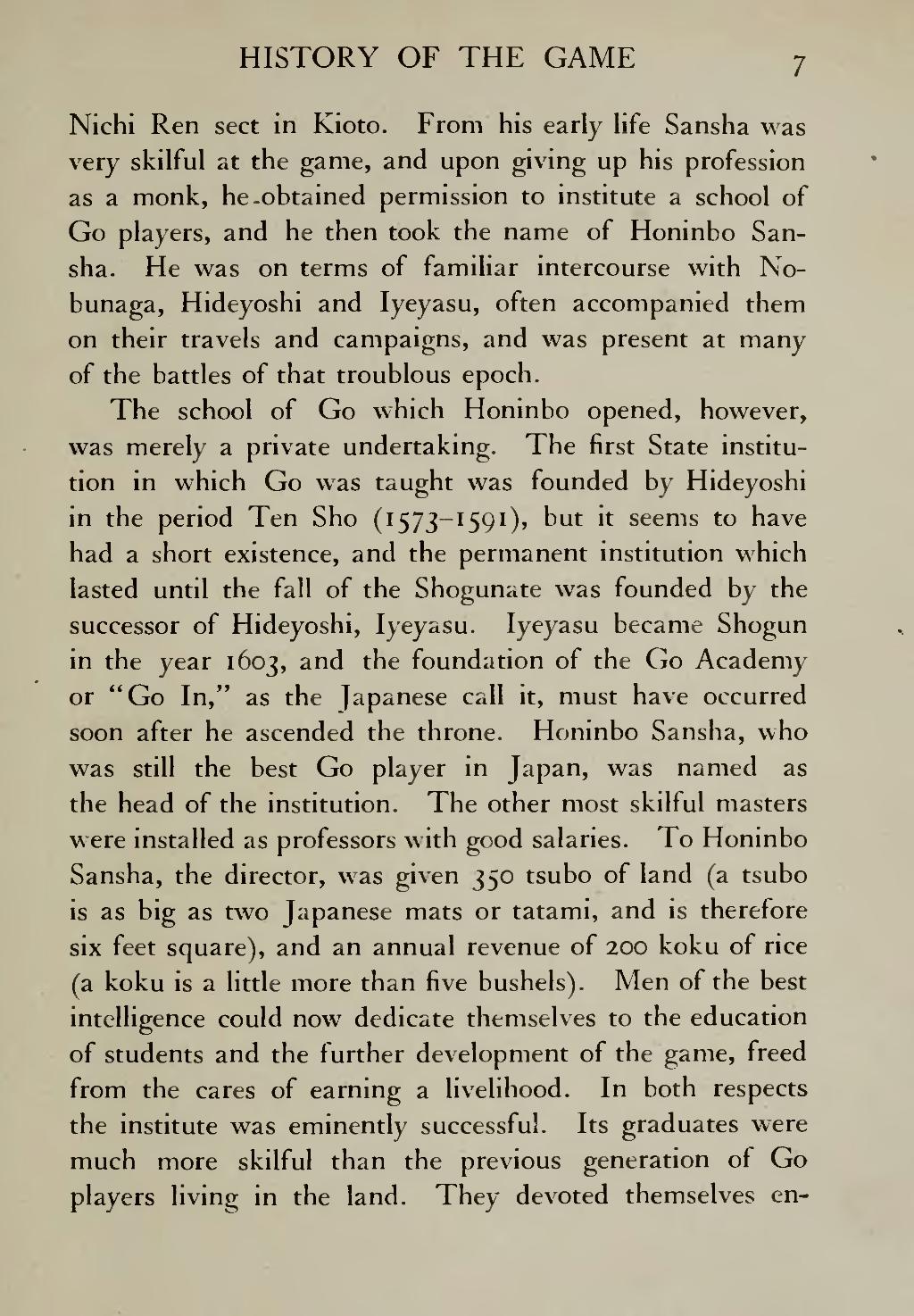Nichi Ren sect in Kioto. From his early life Sansha was very skilful at the game, and upon giving up his profession as a monk, he obtained permission to institute a school of Go players, and he then took the name of Honinbo Sansha. He was on terms of familiar intercourse with Nobunaga, Hideyoshi and Iyeyasu, often accompanied them on their travels and campaigns, and was present at many of the battles of that troublous epoch.
The school of Go which Honinbo opened, however, was merely a private undertaking. The first State institution in which Go was taught was founded by Hideyoshi in the period Ten Sho (1573—1591), but it seems to have had a short existence, and the permanent institution which lasted until the fall of the Shogunate was founded by the successor of Hideyoshi, Iyeyasu. Iyeyasu became Shogun in the year 1603, and the foundation of the Go Academy or “Go In,” as the Japanese call it, must have occurred soon after he ascended the throne. Honinbo Sansha, who was still the best Go player in Japan, was named as the head of the institution. The other most skilful masters were installed as professors with good salaries. To Honinbo Sansha, the director, was given 350 tsubo of land (a tsubo is as big as two Japanese mats or tatami, and is therefore six feet square), and an annual revenue of 200 koku of rice (a koku is a little more than five bushels). Men of the best intelligence could now dedicate themselves to the education of students and the further development of the game, freed from the cares of earning a livelihood. In both respects the institute was eminently successful. Its graduates were much more skilful than the previous generation of Go players living in the land. They devoted themselves en-
